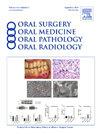Dose-dependent modulation of a B-cell protein signature by ianalumab in patients with Sjögren disease
IF 2
3区 医学
Q2 DENTISTRY, ORAL SURGERY & MEDICINE
Oral Surgery Oral Medicine Oral Pathology Oral Radiology
Pub Date : 2025-02-01
DOI:10.1016/j.oooo.2024.10.097
引用次数: 0
Abstract
Objective
Ianalumab, an afuscosylated monoclonal antibody, depletes B cells and blocks survival signals mediated by the B-cell activating factor receptor (BAFFR). Sjögren disease (SjD) is an autoimmune disorder with exocrine glandular and extraglandular manifestations, elevated BAFF, and autoantibodies to nuclear antigens. A phase 2b dose-finding trial of ianalumab (NCT02962895) in 190 patients with active SjD met its primary endpoint; 300 mg was clinically efficacious and improved whole salivary flow. Here, we explored changes in autoantibody and proteomic signatures with ianalumab treatment to characterize biomarkers associated with SjD disease activity.
Methods
Patients with active SjD (N = 190) were randomized (1:1:1:1) to receive placebo or ianalumab (5/50/300 mg). Serum samples collected at baseline and week 24 were used for protein profiling and delineation of interferon protein signatures using the SomaScan(R) v4.1 platform. Autoantibodies and BAFF levels were assessed by Luminex-based enzyme-linked immunoassay assays. A linear mixed-effect model was used to identify longitudinal changes in protein concentration at week 24 versus baseline. Results were visualized using heatmaps and hierarchical clustering.
Results
At baseline, cluster analysis did not reveal significant correlations between European League Against Rheumatism Sjögren's Syndrome Disease Activity Index scores (including subdomains) and levels of autoantibodies or proteins of interest. Ianalumab led to marked changes in autoantibody and serum protein levels. The 300-mg dose showed increased numbers of significantly modulated serum proteins (42) with more pronounced expression modulation versus the 5-mg (9) and 50-mg (20) dose groups. Several B-cell surface proteins were consistently downregulated by ianalumab, including FcRL4, plausibly involved in the pathogenicity of SjD. The 50-mg and 300-mg doses induced downregulation of additional proteins: B-cell maturation antigen, specifically expressed by antibody-producing cells, or the chemokines CXCL13 and CCL21, associated with immune infiltration of glandular tissues. A trend for downregulation of interferon protein signatures was seen with 50-mg and 300-mg doses.
Conclusions
No differential proteomic signatures related to baseline disease activity were identified. The dose response in clinical efficacy of ianalumab in patients with SjD observed in the phase 2b trial is also reflected at the protein level, with increased depth and breadth of proteomic changes by week 24, correlating with increasing dose.
求助全文
约1分钟内获得全文
求助全文
来源期刊

Oral Surgery Oral Medicine Oral Pathology Oral Radiology
DENTISTRY, ORAL SURGERY & MEDICINE-
CiteScore
3.80
自引率
6.90%
发文量
1217
审稿时长
2-4 weeks
期刊介绍:
Oral Surgery, Oral Medicine, Oral Pathology and Oral Radiology is required reading for anyone in the fields of oral surgery, oral medicine, oral pathology, oral radiology or advanced general practice dentistry. It is the only major dental journal that provides a practical and complete overview of the medical and surgical techniques of dental practice in four areas. Topics covered include such current issues as dental implants, treatment of HIV-infected patients, and evaluation and treatment of TMJ disorders. The official publication for nine societies, the Journal is recommended for initial purchase in the Brandon Hill study, Selected List of Books and Journals for the Small Medical Library.
 求助内容:
求助内容: 应助结果提醒方式:
应助结果提醒方式:


